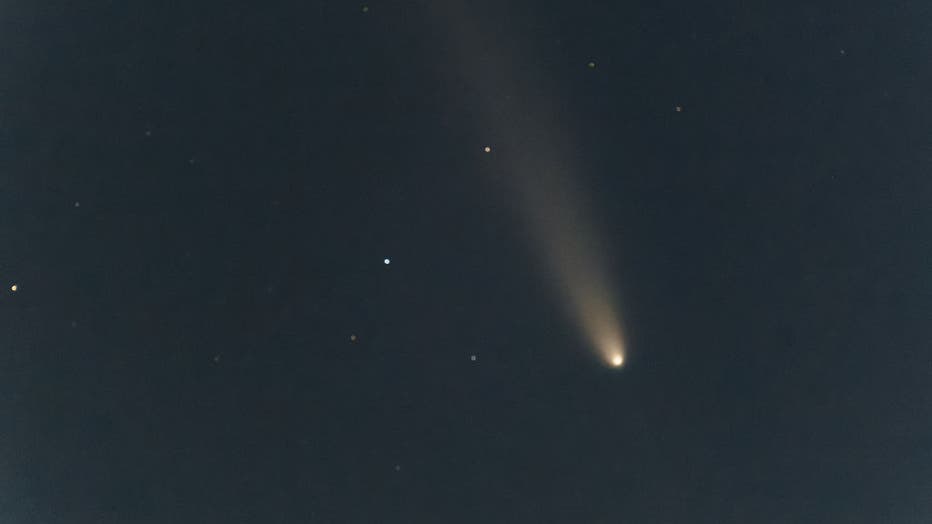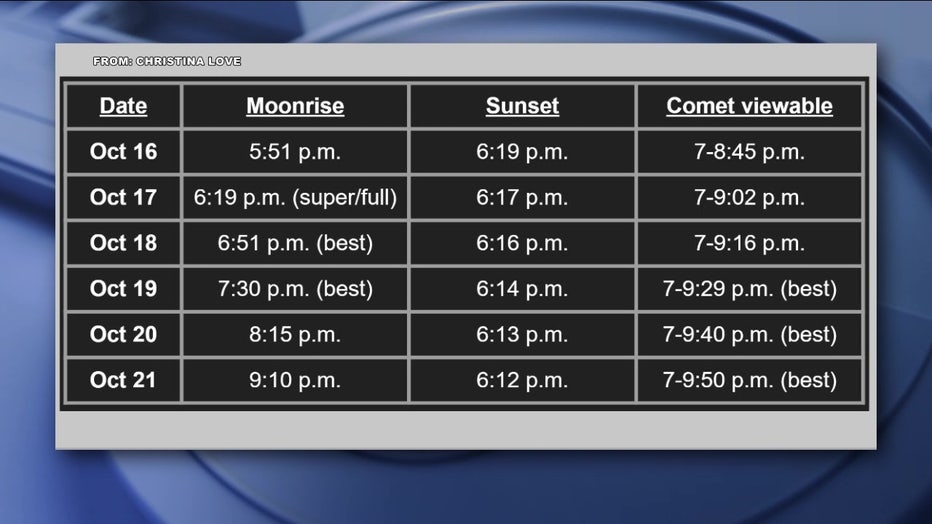Comet watch: Best viewing spots in Philadelphia - plus a local skywatch party

Best comet viewing spots in Philadelphia area | FOX Weather Philly
Professor of Astronomy at West Chester University, Marc Gange, explains the best times and days for the viewing of the comet and why we are seeing this celestial phenomenon.
PHILADELPHIA - If you missed last week's Northern Lights, here's your chance to spot another rare celestial event before its gone for another 80,000 years!
Comet Tsuchinshan-Atlas is offering some stunning views as it makes its way across our night sky this month.
The rare comet only appears every 80,000 years, so you don't want to miss it! Here are some of the best viewing spots around the Philadelphia area:
Where to watch
When it comes to catching sights in the sky, avoiding bright lights is best - a hard feat in the city. However, heading to some local parks could be your best bet to get a clear view:
- The Mann Center
- Cira Green in University City
- Lemon Hill Park
- Belmont Plateau
Looking for a little road trip? Head to Pennsylvania's Cherry Springs State Park, made famous for its "views of the Milky Way, planets, and hard-to-see astronomical objects and phenomena."

Comet C/2023 A3 Tsuchinshan-ATLAS (C/2023 A3) is in the sky over Molfetta, Italy, on October 15, 2024, after sunset, as seen from the Port of Molfetta. (Photo by Davide Pischettola/NurPhoto via Getty Images)
Rooftop bars, such as Sunset Social or Bok Bar, could be a great option. Just check to make sure the rooftop is still open for the fall season.
Viewing Party
If you're looking to enjoy the comet with some other celestial event enthusiasts, you don't have to travel far!
Rowan University in Glassboro, New Jersey, is hosting a free skywatching event from their observatory deck on Thursday. You may even get a double sighting with a "Supermoon" and the rare comet making an appearance.
They'll even provide binoculars and telescopes for better viewing.
Do you need binoculars or telescopes?
Experts say the comet is completely visible with the naked eye depending on the conditions of the night sky.
However, they certainly can't hurt to have!
Professor of Astronomy at West Chester University, Marc Gange, recommends 130 x 50 binoculars, which, he says are fairly standard binoculars.
Where and when can I see the comet?
When searching for the comet, be sure to look west after sunset on a clear night!
Drexel University Physics professor Dr. Christina Love says some of the best views are coming this weekend.

However, the comet will start to lose brightness the higher it climbs, dropping from visibility by the end of the month.
Marc Gange, Professor of Astronomy at West Chester University, says this week's full moon may make it harder to see the comet, so skies will be more ideal in the next couple of days.

